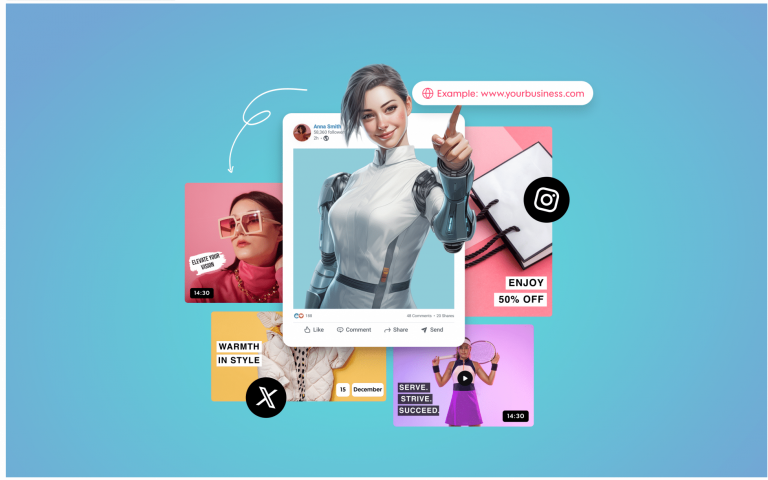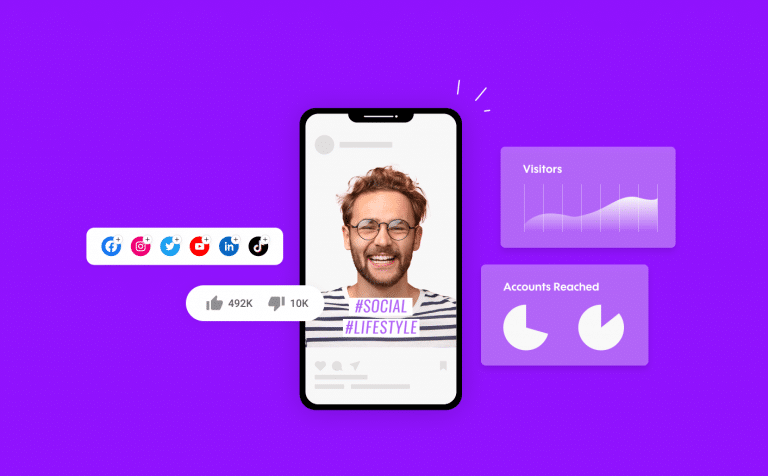
The Basics of Customer Engagement
Transitioning into the new year typically triggers reflection and evaluation of the past twelve months as successes are counted and attempts are made to make peace with mistakes, even in the business world. We want to remind you of a very important, yet, sometimes overlooked concept, to allow you to move into a new year of business feeling confident.
CEOs want to see a high return on investment and the pressure put on marketing teams to prove that strategies are working is through the roof. The end result? Traveling further away ( in what appears to be a desperate attempt to stay on trend, while still being unique), from the strategies that made your business successful in the first place. That’s why we feel it is important to get back to the basics, as we remind you of the fundamentals of customer engagement.
Here is a refresher of why engagement is so powerful, not only in acquiring new customers but also in maintaining the satisfaction of those that already exist.
Nurture
The most basic of the fundamentals – nurturing your customer relationships. Think of your customers (potential and existing) just like you would any relationship in your life. Let’s break this down. When you’ve identified a prospective friendship, you begin to take appropriate steps that will help you build the relationship. Effort is put into a relationship building process that might begin with a few texts here and there, that may lead to invites to grab coffee (or a couple of cocktails, let’s be real), and hopefully regular meet-ups, but certainly not without continually fostering the connection. The work is never complete, and just because the initial effort was put forth, does not mean the relationship will last.
Continually adding value through meaningful interactions throughout the relationship is just as imperative to the success of the relationship as the initial interaction. This is no different for your business, and this also includes knowing when to, well…chill. You wouldn’t overwhelm your new friend with constant texts, phone calls, or emails, just because the individual hasn’t responded, or declined an invite, so don’t make this mistake with your customers. Keep it simple, and don’t be clingy.
Build on your connections through interactions, such as email, that have a clear and meaningful goal. Be aware, this doesn’t translate into ‘always shoot to sell.’ This will turn people off because purchasing is not always relevant to a customer’s journey. Recognize when your message is coming on too strong, and drive your engagement based on where your customers are in the buying process.
Always have an end goal
Before sending an email, posting on social media, or engaging in any way with customers, think about the end goal. What, exactly, is the interaction supposed to achieve? Then, be very clear, so there is no confusion in your message. Remember, you (a human), is trying to engage with potential or existing customers (also human), so avoid using language that is difficult to understand. Be real, relatable, and clear.
Not only should your messages have a clear goal, but your entire engagement effort should be mapped with purpose, from delivering content at the right time, to being able to appropriately develop steps to reach that goal. Timing plays a key role in just about everything. This rings true for engagement between company and customer. It is important to identify the personas of your customers to better understand when the timing will be most beneficial to engage. This includes the best times to post on social media which, by the way, is early afternoon on a weekend via Facebook, as shown by research conducted by Buffer.
Again, remember to remain mindful of where your customers are at in the buying process. Nothing says disconnect like sending a welcome-email to an existing customer, or a “We’ve missed you” message, to a customer who recently purchased a product. Engage with your audience by creating specific and relevant goals for each interaction throughout the entirety of the buying process.
Patience
Part of effectively engaging with customers is patience. As mentioned before, don’t overwhelm your customers by trying to rush the process. ‘Rome was not built in a day’ and your customer relationships will not either. Every individual who reads your blog, visits your website, and views your social media page or post, is at a different stage of the buying process. Expecting a potential customer, who has recently subscribed to company emails, to immediately begin purchasing is just asking too much. Relax, because overloading email subscribers in attempts to spark a purchase will backfire. Be patient. It will benefit your business in the long run.
Utilize tools to the full extent
It is important to recognize that the fundamentals of customer engagement really boil down to knowing your audience. Who is your business targeting and how is that audience reacting to engagement efforts? If your business is not using video to engage with customers, you are missing out on connecting to a huge population. Forbes reported that 84 percent of Millennials (who make up one quarter of the nation’s population and have been identified as the largest generation of consumers) don’t trust traditional marketing. They want to visualize and interact with content because it is what Millennials are familiar with and understand. Developing a video with Promo to fit your audience is the perfect way to create customer engagement by easily customizing a video clip with high-quality features. But how do you get a better understanding of what type of video appeals to potential and existing customers? Once this question is answered with software, like verb’s tagg, you will better be able to utilize your marketing tools to facilitate customer engagement.
It is essential to make sure your engagement efforts are getting a return on investment by watching the numbers. You need to know who is clicking on the video you posted on Facebook, Twitter, and Instagram, and when your viewers watch. You need to be aware of click rates in emails, and which videos are being viewed from start to finish. Understanding your audience will help facilitate engagement. tagg will allow you to nurture customer relationships through real-time interactions while providing analytics necessary to drive your next goal-oriented move. verb simplifies engagement by providing your audience with the option to engage on their terms by enabling self-scheduling and real-time call but also gives feedback essential to properly nurture your connections.
Take full advantage of the tools available to assist your business in its customer engagement efforts. Doing so will build the confidence needed to believe in your plan, and remember to be patient while properly nurturing your leads and existing customers. Strive to be different, but don’t forget about the fundamentals of what makes a good business, a good business.
Moreover, look to Promo.com for everything you need to start advertising with video. Create a video to nurture customer loyalty and so much more.






